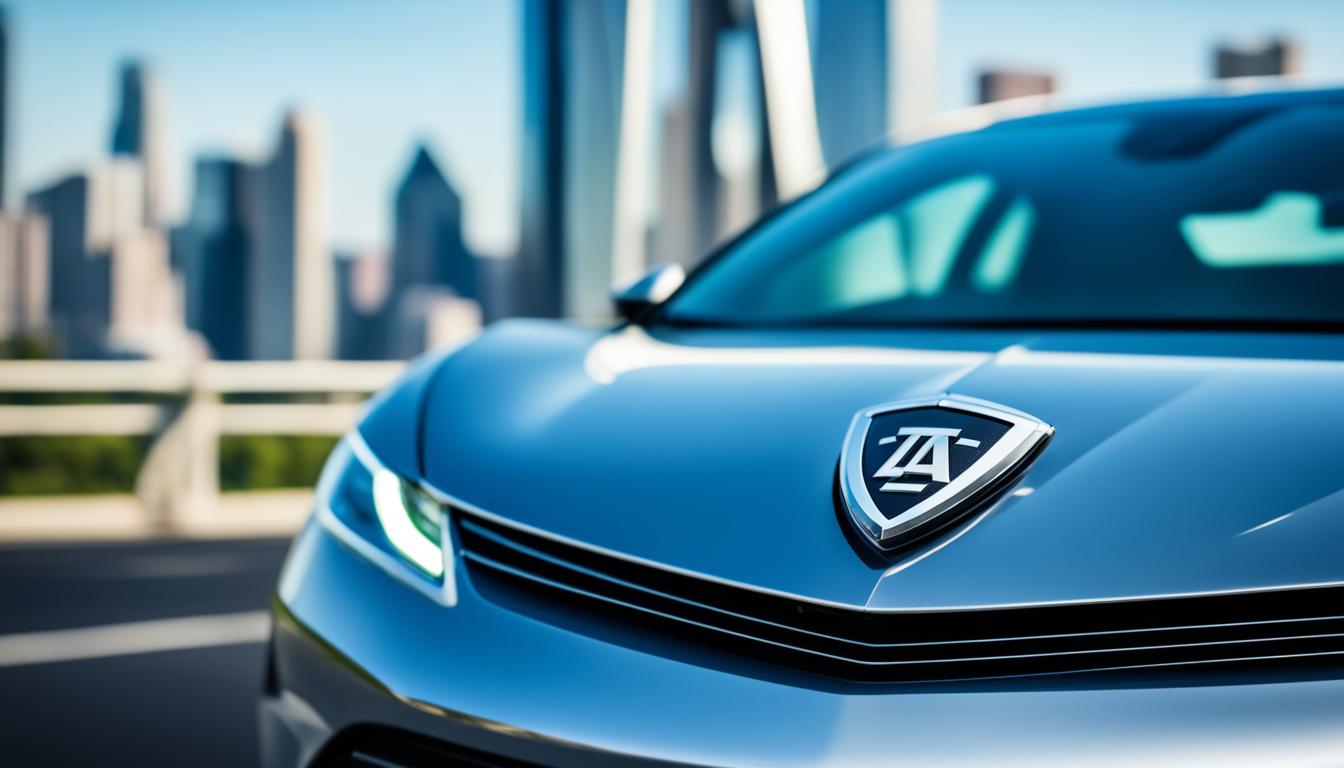Comprehensive auto insurance helps pay for your car’s repairs after non-collision events. This includes things like natural disasters, theft, vandalism, and animal crashes. It’s not for when your car crashes into something. This insurance type safeguards your wallet from the cost of damages in such events. Choosing it depends on your car’s value, your area, and how you drive.
Key Takeaways
- Comprehensive insurance covers non-collision damage to your vehicle, such as from natural disasters, theft, vandalism, and animal strikes.
- It does not cover damages from a collision with another vehicle or object.
- Factors like your vehicle’s value, location, and your driving history can impact the need for comprehensive coverage.
- Comprehensive insurance can provide valuable financial protection, especially for newer or high-value vehicles.
- Reviewing coverage options with a local insurance agent can help you determine if comprehensive insurance is the right choice for your situation.
Understanding Comprehensive Auto Insurance
Comprehensive auto insurance protects your vehicle from damages that don’t happen in a collision. It’s different from collision insurance, which helps if you hit another car or object. Comprehensive insurance guards against a lot, including hail, falling branches, and even theft.
What is Comprehensive Insurance?
It’s insurance that fixes or replaces your car when it’s damaged by certain non-collision events. You don’t have to get it, but for newer or pricier cars, it’s a smart choice. This insurance means you don’t have to worry about lots of unexpected damages. Without it, you could end up paying big for repairs.
Key Coverages of Comprehensive Insurance
Comprehensive insurance covers your car for:
- Damage from natural disasters like hail, floods, and earthquakes
- Animal strikes, so if you hit a deer or bird, you’re covered
- Vandalism such as graffiti, keying, or broken windows
- Theft, including stolen cars or car parts
This insurance means you’re covered for many types of damages. So, you won’t have to pay as much for repairs if something happens.
Difference Between Comprehensive and Collision Coverage
The big difference between comprehensive vs collision insurance is what they cover. Collision coverage pays for your car’s damage from hitting another car or object. It doesn’t matter who was at fault. On the flip side, comprehensive coverage handles losses from not hitting something. This means it helps with losses from natural disasters, theft, vandalism, and hitting animals.
If you’re paying off a car loan or leasing, you often need collision insurance. It’s a must. On the other hand, comprehensive insurance is usually not a must-have but can be very useful. It’s great for protecting newer or expensive cars from many different types of damage. Without it, you could get stuck with big repair or replacement bills.
| Comprehensive Insurance | Collision Insurance |
|---|---|
| Covers damage from non-collision events (e.g., natural disasters, theft, vandalism, animal strikes) | Covers damage if your vehicle collides with another car or object, regardless of fault |
| Optional coverage, but can provide valuable protection | Required if you have a car loan or lease |
| Helps protect against a wide range of potential damages | Ensures your vehicle is repaired or replaced after a collision-related incident |
Knowing the important differences between comprehensive vs collision auto insurance coverage types is critical. It helps you choose the best protection for your car and how you drive it.
When is Comprehensive Insurance Required?
Auto insurance might need comprehensive coverage in some cases. This is true if you’re financing or leasing your car. Also, it matters for cars with high values. Knowing when to get comprehensive coverage lets you better protect your vehicle.
For Financed or Leased Vehicles
Leasing or still paying a loan on your car? The company you owe money to will likely ask for comprehensive and collision coverage. They do this to protect their investment. This ensures the car is safe from harm during the loan or lease time.
Based on Vehicle Value and Location
Even if your car is fully paid for, consider comprehensive coverage for high-value cars. This type of insurance helps cover expensive repairs or replacements. It’s protection against theft, vandalism, and natural disasters.
If your car is older and not worth much, you might skip comprehensive coverage. The cost of the insurance might be higher than what you’d get back if you needed to file a claim.
What Does Comprehensive Insurance Cover?
Comprehensive auto insurance covers a lot of non-collision damage. It protects your vehicle against various risks. This means it can pay for repairs or a new car if yours is affected by things like:
Damage from Animals
It pays for damages from hitting deer, raccoons, or other wildlife. These accidents are common outside cities. They can cause big issues for your car inside and out.
Natural Disasters and Weather Events
It covers damage from hail, floods, earthquakes, and more. For example, if a hailstorm damages your car, this coverage helps get your car back to normal.
Vandalism and Theft
It helps with vandalism, like key scratchings or graffiti, and broken windows. Also, if your car gets stolen or parts are taken, it’s covered. This can ease your worries, especially in places with more car crime.
Knowing what comprehensive insurance includes is important. It keeps your vehicle safe from many risks. This is good for your investment and saves you money if something unexpected happens.
Cost of auto EXPERT COMPREHENSIVE INSURANCE DAMAGE
Comprehensive insurance costs can change a lot. On average,
comprehensive coverage costs around $134 to $268 per year
. The final cost depends on a few things. These include where you live, your car’s value, and how much you’re willing to pay out of pocket if you make a claim. Also, your driving history and other personal details matter.
Average Premiums and Deductibles
If you choose a higher deductible, your comprehensive insurance premiums can go down. But this means you’ll have to pay more upfront for any claim. The usual deductible for comprehensive insurance is between $250 and $1,000. Picking a higher deductible can reduce what you pay each month.
Factors Affecting Premiums
Insurers look at a few key things when deciding your rate. This includes the theft and accident rates in your area, what car you drive, and your claims history. Cars that are at a higher risk of being stolen or damaged might have higher premiums. The same goes for drivers who have had to make claims before.
Advantages and Disadvantages of Comprehensive Coverage
Comprehensive insurance is great for protecting your car, but it’s smart to think over its benefits. This way, you know if it’s right for you. Let’s look at what’s good and not so great about having comprehensive insurance.
Pros of Comprehensive Insurance
Comprehensive insurance guards your car against damages not from collisions. It covers things like theft, natural disasters, vandalism, and hitting animals. This helps a lot with costly repairs or if you need to replace your car fully.
This type of coverage also gives peace of mind, especially if your car is new or worth a lot. It’s nice knowing you’re protected from many unexpected events.
Cons of Comprehensive Insurance
Yet, there are drawbacks to consider. Collision damage isn’t covered, reminding you to also look into collision insurance. For older cars or ones of lower value, the cost to insure might be more than it’s worth.
It might make more sense to cover the costs yourself. Plus, having comprehensive insurance increases your total insurance bill. This is something to bear in mind when deciding.
Filing a Comprehensive Insurance Claim
If your car gets damaged by a covered event, you should file a claim. This ensures you get the right coverage for non-collision damages. You’ll get reimbursed for the costs.
Steps to File a Claim
The first thing to do is tell your insurance company about the damage quickly. They need to know to start the process. They’ll tell you what documents are needed. Then, get all the right paperwork together. This includes pictures of the damage, repair quotes, and a police report if it’s relevant.
After sending in all the info, you have to pay your deductible. This is the amount you cover before insurance helps. Your insurer will check your claim and decide if repairs can go ahead. Or, they may offer you money if your car can’t be fixed.
Required Documentation
For a comprehensive claim, you usually need to provide:
- Detailed photos of the damage to your vehicle
- Repair estimates from an authorized auto repair shop
- A police report if the incident involved theft or vandalism
- Receipts for any emergency repairs or temporary transportation costs
It can make things easier if you keep good records. This makes sure your insurance company can quickly review your claim. They’ll have all they need to sort things out.
When to Drop Comprehensive Coverage
As your car gets older, you might think about dropping comprehensive insurance. This decision can be based on your car’s age, mileage, and current value. It’s about whether it’s still worth it to keep paying for this kind of coverage.
Vehicle Age and Value
Old cars with lots of miles under their belts often aren’t worth as much. So keeping up with comprehensive coverage might not be key. If your car’s value has dipped a lot and it’s not brand new, the cost of this type of insurance might not be justified.
For these older vehicles, you might end up spending less if you pay for any damages yourself. This is instead of paying for all of that comprehensive coverage for years. So, it’s all a balance based on your car’s value and the cost of coverage.
Cost-Benefit Analysis
When it comes to dropping comprehensive insurance, look at the costs and benefits closely. Think about how often severe weather or thefts happen in your area. Also, consider if animal collisions are common where you drive.
If the cost of your comprehensive coverage is high compared to these risks and your car’s value, you might want to think about dropping it. It’s about seeing if this move makes sense for your wallet.
Comparing Providers for Comprehensive Insurance
Comparing comprehensive insurance options is vital when safeguarding your vehicle. looking at what many
comprehensive insurance providers
offer helps you get the best coverage and prices. Start by looking at online insurance sites to compare.
Online Resources for Comparison
Online tools let you enter your car info and what coverage you need. Then, you can easily check and compare insurance plans. This way, you can pick ones that meet your needs.
Factors to Consider
When picking a comprehensive insurance provider, look at the limits, deductibles, customer service, and financial standing. Taking time to look into and compare comprehensive coverage can help. You can find the best comprehensive auto policy for your car.
Using online resources wisely and weighing the factors to consider when buying comprehensive insurance helps a lot. It lets you choose the best coverage for your budget. The right comprehensive insurance can protect your car from many risks.
Conclusion
Comprehensive auto insurance is vital. It protects your car from many types of damage like theft, vandalism, and animal hits. This type of insurance is not a must, but it’s great for cars that are new and costly.
It gives you peace of mind. And it protects your wallet if something unexpected happens. Think about what it can do for you versus what you’ll pay. This will help you figure out if it’s right for you.
Things change all the time, especially with cars. By being smart and keeping on top of your insurance, your car will be in good hands. This will let you drive without worry, ready for whatever comes your way.






